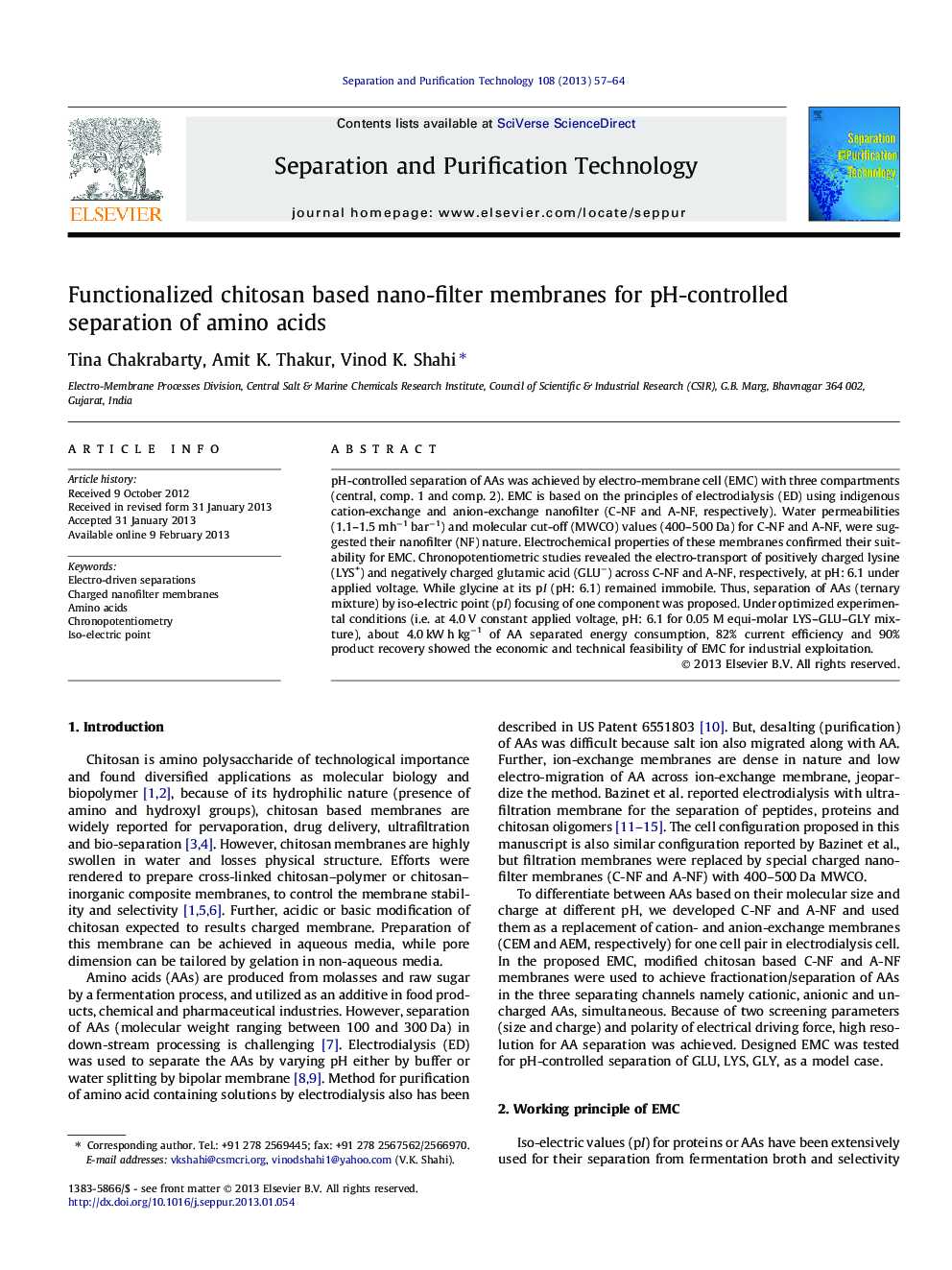| Article ID | Journal | Published Year | Pages | File Type |
|---|---|---|---|---|
| 641861 | Separation and Purification Technology | 2013 | 8 Pages |
pH-controlled separation of AAs was achieved by electro-membrane cell (EMC) with three compartments (central, comp. 1 and comp. 2). EMC is based on the principles of electrodialysis (ED) using indigenous cation-exchange and anion-exchange nanofilter (C-NF and A-NF, respectively). Water permeabilities (1.1–1.5 mh−1 bar−1) and molecular cut-off (MWCO) values (400–500 Da) for C-NF and A-NF, were suggested their nanofilter (NF) nature. Electrochemical properties of these membranes confirmed their suitability for EMC. Chronopotentiometric studies revealed the electro-transport of positively charged lysine (LYS+) and negatively charged glutamic acid (GLU−) across C-NF and A-NF, respectively, at pH: 6.1 under applied voltage. While glycine at its pI (pH: 6.1) remained immobile. Thus, separation of AAs (ternary mixture) by iso-electric point (pI) focusing of one component was proposed. Under optimized experimental conditions (i.e. at 4.0 V constant applied voltage, pH: 6.1 for 0.05 M equi-molar LYS–GLU–GLY mixture), about 4.0 kW h kg−1 of AA separated energy consumption, 82% current efficiency and 90% product recovery showed the economic and technical feasibility of EMC for industrial exploitation.
► Charge based pH-controlled separation of amino acids. ► Indigenously prepared highly selective cationic and anionic charged nano-filter membranes, used in electro-membrane cell. ► Chronopotentiometric studies revealed the electro-transport and selectivity in separation.
